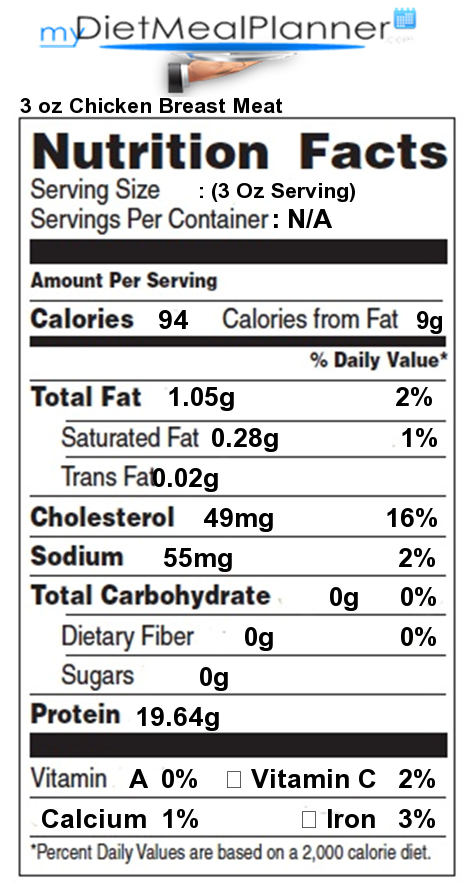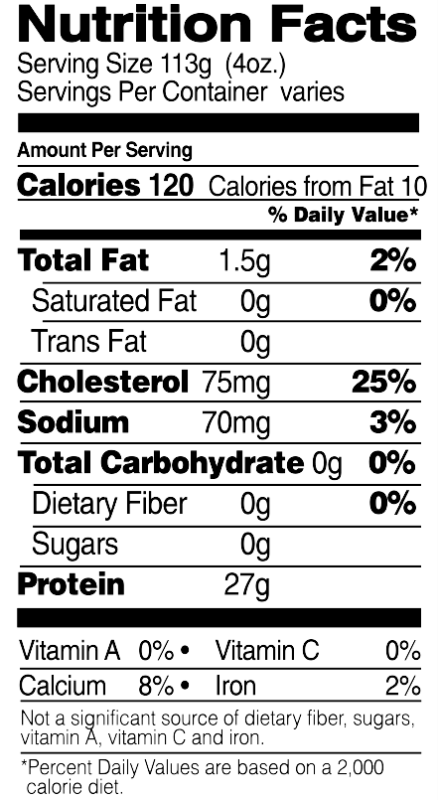
- #Chicken breast nutrition facts how to
- #Chicken breast nutrition facts update
- #Chicken breast nutrition facts skin
- #Chicken breast nutrition facts free
She previously served as the sports performance dietitian for Georgetown University's Division I Athletic Department.

She regularly appears on morning shows in Baltimore and Washington, DC. Meet the experts: Roxana Ehsani, RD, is a national media spokesperson for the Academy of Nutrition and Dietetics.
#Chicken breast nutrition facts how to
Experts break down the nutrition of chicken breast, as well as how to choose and cook it. Protein is a pretty essential part of your health, and chicken is a great way of making sure you get your fill.

"Consuming enough protein can help reduce risk of bone disease like osteoporosis and prevent fractures." "Bones are composed of proteins, and people who eat more protein tend to better maintain their bone mass, especially as we age and our bone mass slowly declines over time," explains Ehsani. when we are eating a low protein diet," Ehsani says.Ĭonsuming a high-protein diet can help support bone health too. "When consuming a high-protein diet, our body can better prevent a loss of muscle mass, vs. Your body also needs sufficient protein to help repair, rebuild, and maintain your muscle mass. That's why some people may lose weight when they start eating a high-protein diet.Īnd people who include protein at each meal and for snacks typically eat less overall as they feel more satisfied for longer, according to research. you are burning calories) to digest protein, so protein-rich foods temporarily rev up your metabolism when they are going through your digestive tract and being absorbed by your body, says Ehsani. The benefits of eating lean protein or a high-protein diet are pretty massive. serving, which is higher than what you'd get from steak, pork, roasted turkey, lamb, and even rotisserie chicken, says Laura Iu, RD. To break it down, the meat offers a whopping 28 grams of protein per 3 oz. "Chicken breast is one of the leanest protein options out there," says Roxana Ehsani, RD, CSSD, LDN, a national media spokesperson for the Academy of Nutrition and Dietetics. The protein in a chicken breast simply cannot be beat. It's a number that's three times the growth rate of pork, and 10 times that of beef. In 2022, chicken consumption is expected to reach 98 million metric tons-double the amount in 1999, according to Bloomberg. Chicken and food poisoning.Chicken is king when it comes to protein, and everybody knows it. Meat and poultry labeling terms.Ĭenters for Disease Control and Prevention. US Department of Agriculture Food Safety and Inspection Service. National Institute of Diabetes and Digestive and Kidney Diseases.
#Chicken breast nutrition facts update
Update on the bird-egg syndrome and genuine poultry meat allergy. Analysis, nutrition, and health benefits of tryptophan. Influence of tryptophan and serotonin on mood and cognition with a possible role of the gut-brain axis. Jenkins TA, Nguyen JCD, Polglaze KE, Bertrand PP. The effects of consuming frequent, higher protein meals on appetite and satiety during weight loss in overweight/obese men. Leidy HJ, Tang M, Armstrong CL, Martin CB, Campbell WW. Dietary protein and skeletal health: A review of recent human research. Live strong and prosper: The importance of skeletal muscle strength for healthy ageing. Dietary protein to maximize resistance training: A review and examination of protein spread and change theories. B vitamins and the brain: mechanisms, dose and efficacy-a review.
#Chicken breast nutrition facts skin
Department of Agriculture.Ĭhicken, breast, roasted, broiled, or baked, skin eaten.

For example, they must be given 100% organic feed.Ĭhicken, broiler or fryers, breast, skinless, boneless, meat only, cooked, grilled.

#Chicken breast nutrition facts free


 0 kommentar(er)
0 kommentar(er)
